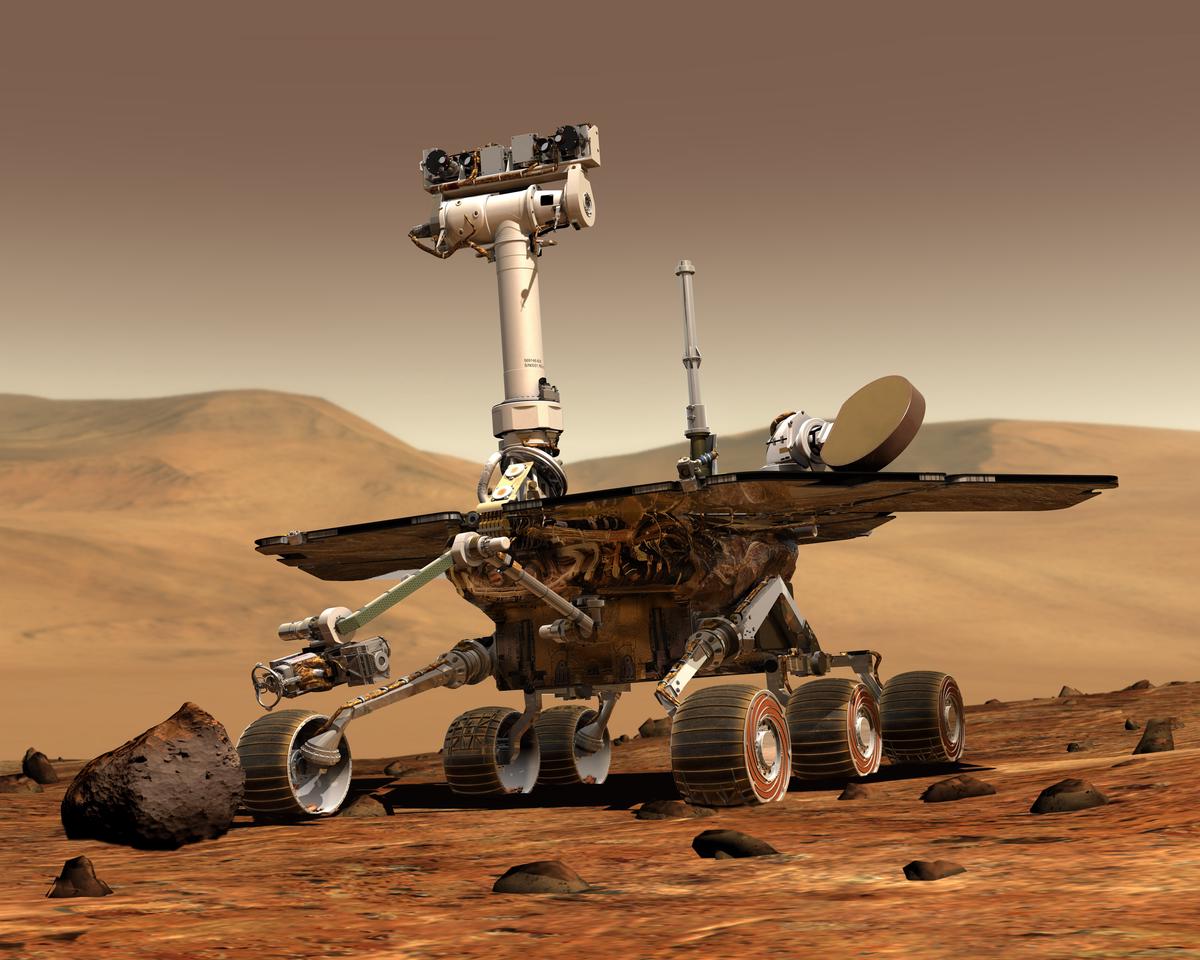Scientific Discovery
Mars exploration has dramatically expanded our knowledge about planetary formation and evolution. As Earth's neighbor, Mars offers unique insights into geological processes and atmospheric dynamics that are harder to gather solely from our home planet.
Water on Mars is a key focus, identified mostly in its frozen form beneath the surface. This discovery reshapes our understanding of Mars' past, indicating it once harbored conditions potentially suitable for life. The presence of water provides valuable information about the planet's climate history.
Mars' geological structure features remarkable landmarks like:
- Olympus Mons: The tallest volcano in the solar system
- Valles Marineris: A canyon that dwarfs Earth's Grand Canyon
These structures offer windows into Mars' geological past, revealing information about its volcanic and tectonic activities. Unlike Earth, Mars appears to have lost most of its internal heat, leading to a cessation of significant volcanic activity.
Mars' thin atmosphere, mainly composed of carbon dioxide, provides another area of study. Understanding why Mars' atmosphere thinned over time helps us grasp broader concepts of atmospheric evolution.
Rovers like Curiosity and Perseverance have made substantial contributions to our understanding of Mars. They've analyzed soil samples and captured detailed images revealing sedimentary layers that hint at ancient riverbeds and lakebeds. These analyses provide context to Mars' transformation from a potentially habitable world to its current arid state.
The search for past life on Mars remains a focus of scientific inquiry. The discovery of organic molecules and fluctuating methane levels, while not definitive proof of past microbial life, suggest Mars had the ingredients necessary for life as we know it.
Comparing Mars with Earth allows scientists to expand their understanding of terrestrial and extraterrestrial processes. Mars' lack of a magnetic field, in contrast to Earth's protective magnetosphere, affects everything from atmospheric retention to surface radiation levels, offering a testbed for theories related to planetary magnetism and habitability.
Each finding on Mars contributes to our broader understanding of planetary dynamics and the conditions that support life. The Red Planet serves as a cosmic laboratory, enhancing our grasp of geological and atmospheric processes, and ultimately leading us back to profound questions about our own planet.
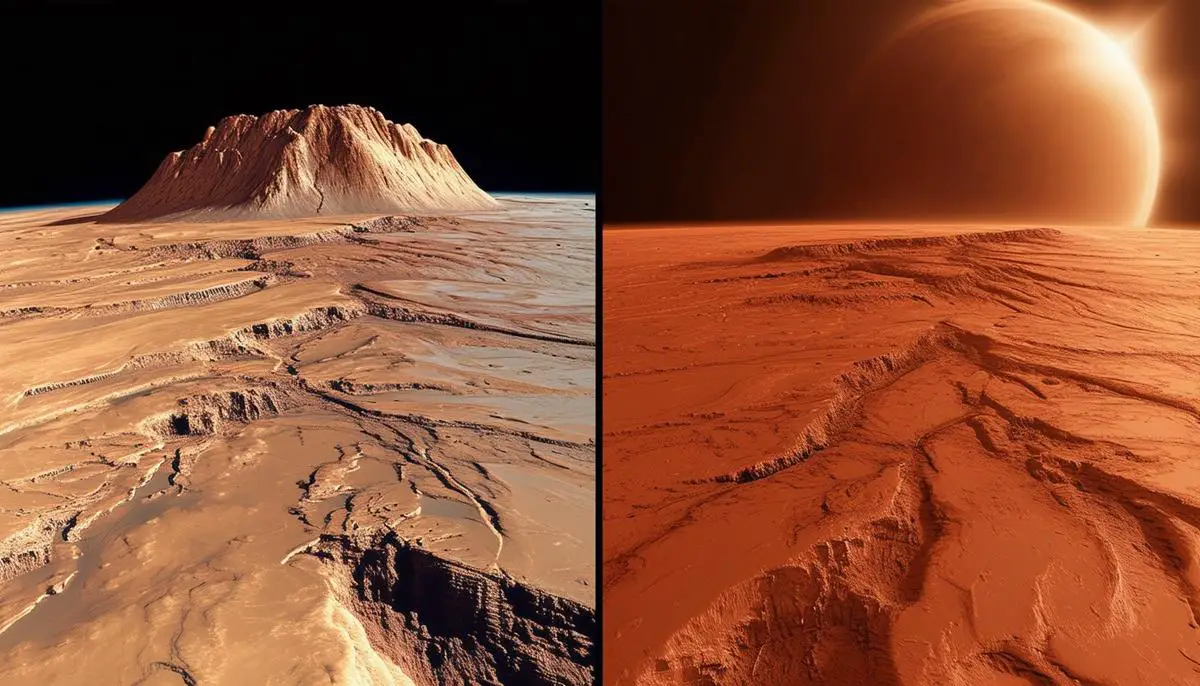
Technological Advancements
Mars exploration has driven remarkable technological advancements that extend beyond space exploration, transforming various aspects of life on Earth.
Entry, Descent, and Landing (EDL) Systems
The EDL systems developed for Mars missions, such as the sky crane maneuver used for Curiosity and Perseverance rovers, showcase human ingenuity. These advancements enhance our understanding of landing spacecraft on celestial bodies and influence aviation and automotive industries on Earth, leading to safer, more efficient navigation and landing systems.
Robotics and Imaging
The development of uncrewed rovers has propelled the field of robotics. Equipped with advanced imaging systems and robotic arms capable of drilling and sample collection, these rovers have applications in industries operating in extreme or hazardous environments on Earth, such as mining and underwater exploration.
Digital imaging technology has reached new heights, with high-resolution cameras aboard Martian rovers capturing detailed visuals crucial for scientific analysis and mission planning. These advancements extend to medical fields, enhancing diagnostic tools like MRIs and CT scanners.
Power Systems and Autonomous Technologies
Power systems developed for Mars missions, such as radioisotope thermoelectric generators (RTGs), demonstrate significant advancements in sustainable and long-lasting power supply. This technology influences the development of renewable energy solutions on Earth.
Autonomous and semi-autonomous systems born from Mars exploration missions have applications in improving autonomous vehicles, logistics, and urban planning on Earth.
Materials Science and Communication
Materials science has advanced to meet the demands of Mars missions, developing composites and alloys that withstand extreme conditions. These materials find applications in enhancing the durability and safety of consumer goods and infrastructure on Earth.
Communication technologies forged for Mars exploration drive innovation in signal processing and data transmission techniques, bolstering global communication networks and enhancing internet connectivity in remote regions.
"Through exploring Mars, we not only gain insights about our cosmic neighborhood but also push the boundaries of human capability, making technological strides that benefit our world in profound ways."
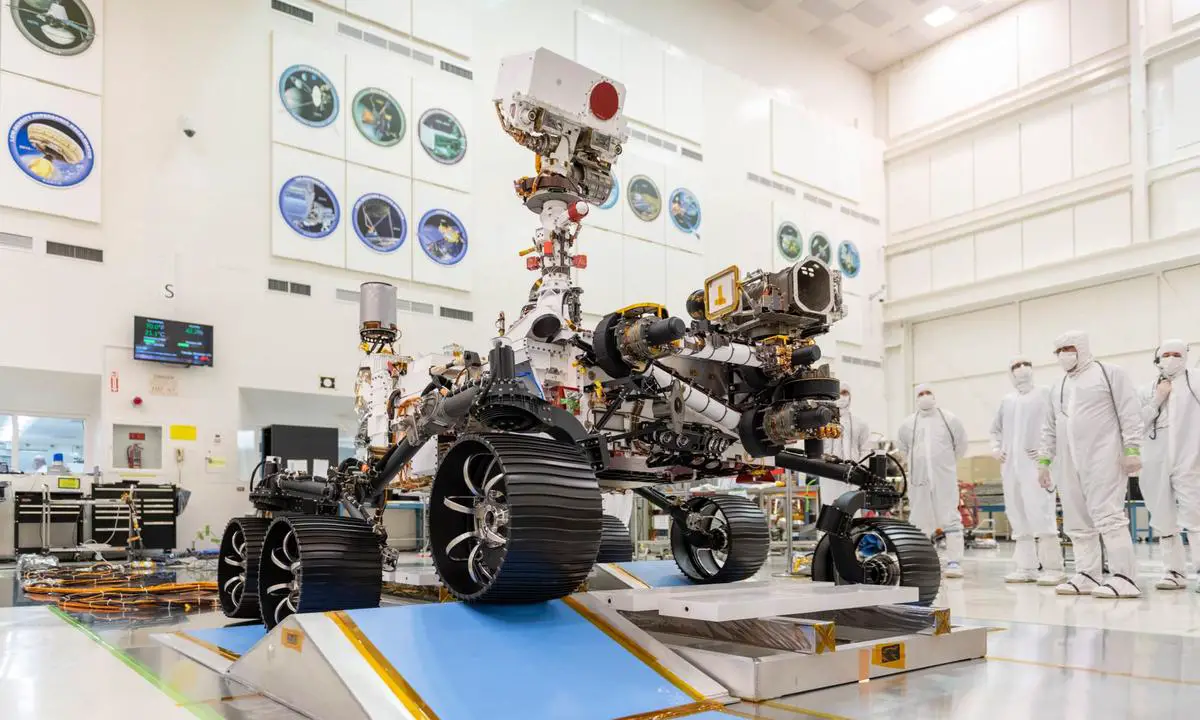
Economic Benefits
Investing in Mars exploration offers economic benefits that extend beyond the immediate costs of the missions. The reuse and adaptation of technologies initially developed for space exploration lead to cost reductions in subsequent missions and have applications in various industries on Earth.
Resource Extraction and Energy
Resource extraction from Mars could potentially redefine the energy landscape on Earth. The abundance of deuterium on Mars, essential for nuclear fusion, could catalyze advancements in fusion reactor technology, promising a future of sustainable and affordable energy.1
Workforce Development
Mars missions demand a highly specialized workforce, fostering an environment of high innovation. The technical proficiencies and advanced problem-solving skills developed have a trickle-down effect across industries, elevating standards and accelerating progress in fields such as:
- Artificial intelligence
- Robotics
- Materials science
- Telecommunications
Technology Transfer and Economic Growth
Investments in space exploration spur economic growth through technology transfer. Innovations developed for Mars missions often have commercial and practical applications across various sectors, driving efficiency and fostering new market opportunities.
The economic ripple effect of Mars exploration is evident in the support industries it engenders. Companies specializing in advanced materials, sensor technology, and rocket propulsion systems experience increased demand, boosting economic activity and creating jobs.
Government Funding and Economic Stimulus
Government funding for Mars missions acts as a direct economic stimulant, creating high-tech jobs and supporting a network of subcontractors and suppliers. This injection of capital helps maintain a competitive edge in global technology and innovation markets.
In essence, Mars exploration is an investment in the future, catalyzing technological breakthroughs and economic growth. The innovations derived from tackling the Red Planet's challenges find valuable applications on Earth, enhancing our daily lives and driving new economic opportunities.
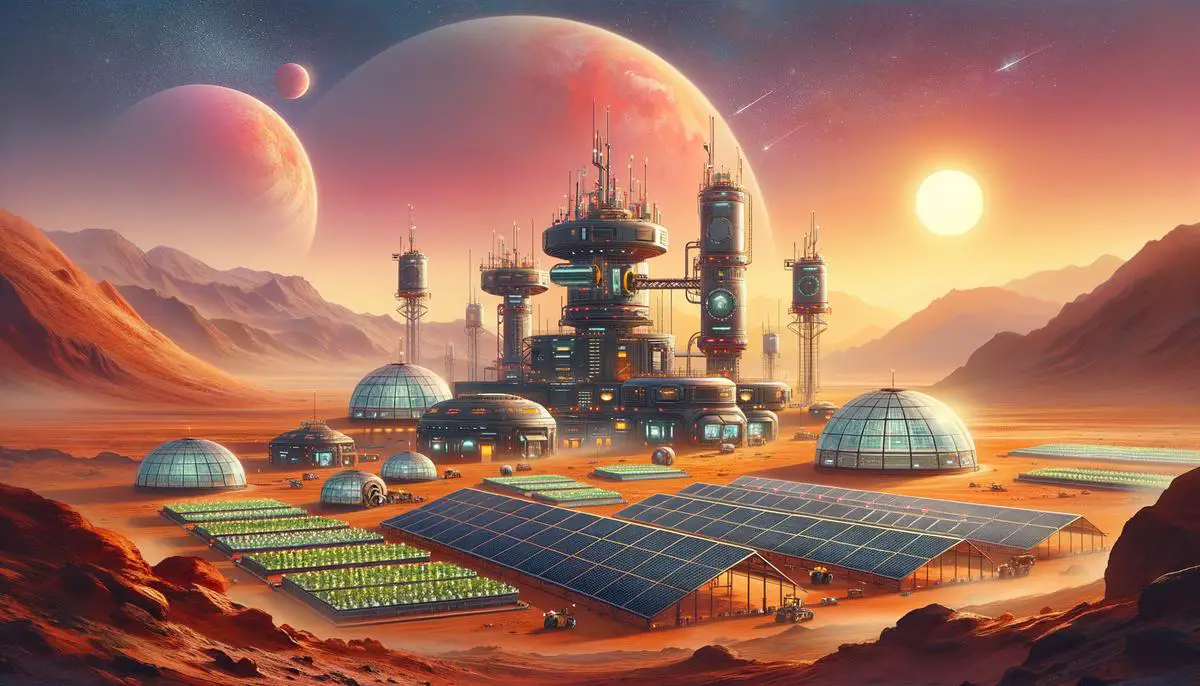
Human Expansion & Habitability
Mars presents a unique opportunity for human expansion and habitability due to the availability of essential elements such as water, carbon, nitrogen, and hydrogen. These elements exist on Mars in more readily accessible forms than on Earth's moon or other planetary bodies.
Water and Agriculture
Water, detected in significant quantities mostly as subsurface ice on Mars, is crucial for human survival and could potentially support agricultural practices. Initial human missions will focus on extracting and purifying this water using advanced robotics and autonomous systems.
Agriculture on Mars could be achievable by leveraging the planet's raw materials. Using controlled environments like greenhouses, it may be possible to cultivate crops using Mars' abundant carbon dioxide and mineral-rich soil after initial treatment.
Habitat Construction
Mars colonists may initially dwell in habitats constructed from Earth-supplied materials. However, the long-term vision involves using Martian resources to build infrastructure. The regolith could be utilized to produce building materials, potentially in combination with advanced 3D printing technologies.
Terraforming
Terraforming Mars remains a long-term possibility, with proposed methods including the release of greenhouse gases to thicken the atmosphere and warm the surface.2
Health and Safety Challenges
Addressing health and safety challenges on Mars will require innovative solutions. These may include:
- Designing habitats with enhanced shielding
- Developing advanced medical protocols
- Employing highly durable materials
- Implementing telehealth systems and autonomous medical tools for health monitoring and crisis management
Psychological Well-being
The psychological well-being of settlers will be a priority, requiring robust mental health support mechanisms. Virtual reality and other immersive technologies can help maintain social bonds and psychological well-being.
Establishing a human presence on Mars will push the frontiers of science, technology, and human resilience. By harnessing Mars' natural resources and pioneering innovative solutions, we can potentially transform it into a habitat conducive to human life, while also yielding transformative technologies that benefit Earth.
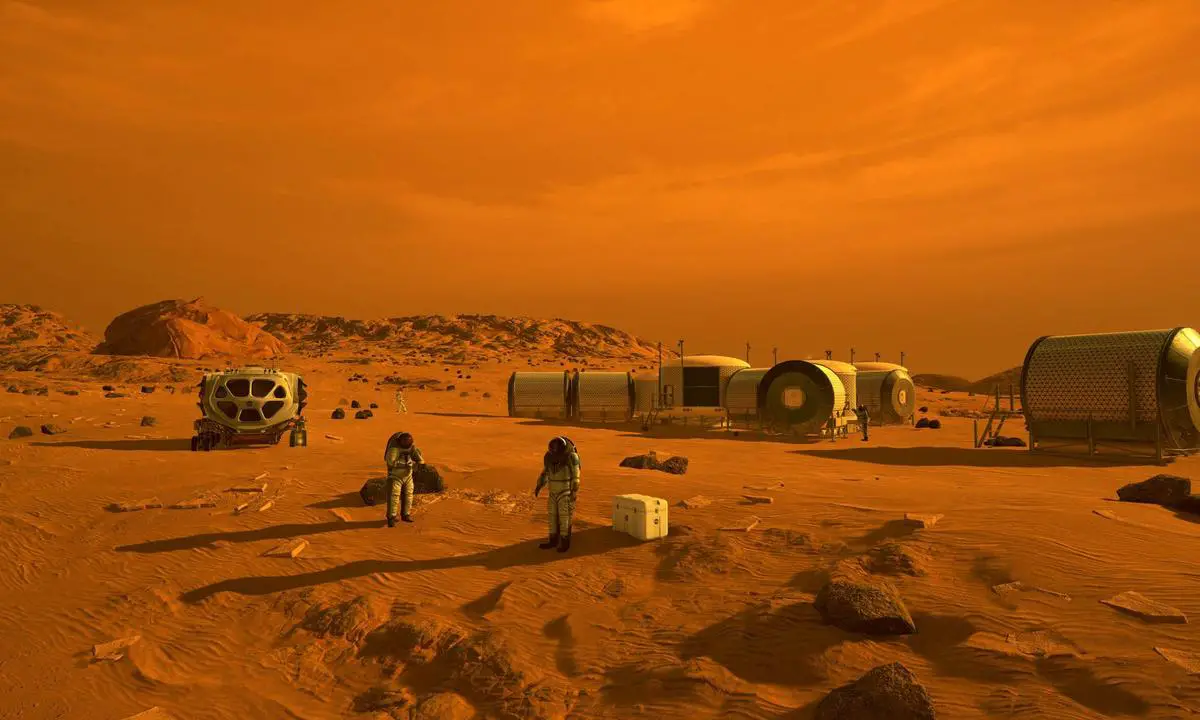
Inspirational Impact
Mars exploration profoundly inspires society beyond science and technology. It sparks public interest and curiosity, fostering a new generation passionate about science, technology, engineering, and mathematics (STEM). The ambitious goals of reaching and studying Mars capture imaginations worldwide, offering inspiration for countless individuals.
Children and students are drawn to space mysteries, with Mars missions providing tangible examples of human ingenuity and perseverance. Educational programs incorporate content related to Mars exploration, encouraging more students to pursue STEM careers. The excitement surrounding these missions breeds a culture of curiosity and innovation. Interactive activities, such as building model rovers or simulating Mars habitats, make learning engaging and foster a hands-on approach to education.
Mars exploration also plays a pivotal role in international collaboration. Space missions require extensive cooperation and resource-sharing among different countries and their respective space agencies. Collaborative projects, such as the planned Mars Sample Return mission involving NASA and the European Space Agency (ESA), exemplify how nations can work together for common scientific goals despite geopolitical differences.1
High-profile missions capture media attention worldwide, transforming into stories of human determination and achievement. The accounts of robotic rovers traversing the Martian terrain, or the challenging landing sequences, captivate audiences and generate widespread admiration for the scientific community. These stories create a sense of shared human endeavor, uniting people in support of exploration and discovery.
Inspiring public interest in Mars exploration can also lead to increased support for scientific funding and research. When the public is excited about space missions, governments and private sectors are more likely to invest in technologies that drive these explorations forward. This support extends back into academic institutions and industries, spurring innovations that advance space exploration and improve life on Earth.
Public Engagement Initiatives
- Citizen science projects
- Interactive web platforms (e.g., NASA's Mars rover simulations)
- Image classification by enthusiasts
- Analysis of Martian geological data
These initiatives democratize space, enabling people from various backgrounds to contribute to scientific discoveries.
Mars exploration also has a psychological and cultural impact, evoking a sense of wonder and possibility. It challenges humanity to think beyond our terrestrial constraints, contemplating what it means to live on another planet and how it could reshape our understanding of life's potential in the universe. The imagery and findings from Mars missions can inspire artists, writers, and thinkers, leading to new expressions of creativity and challenging our perceptions of existence.
"Through reaching for Mars, we inspire ourselves to reach higher, dreaming of a future where the boundaries of possibility are ever-expanding, both on our home planet and beyond."

In the pursuit of understanding Mars, we uncover not just the mysteries of a neighboring planet but also insights into our own existence. Each discovery, whether it's a trace of ancient water or an innovative technology born from necessity, brings us closer to answering fundamental questions about life and the universe. As we continue this journey, Mars serves as both a mirror and a beacon, reflecting our past and illuminating the path forward.
![]()
